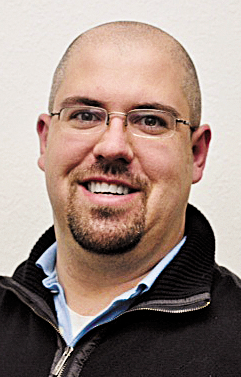The ROI behind Roland's DWX-50
The Lab
The Lab

Dwight and Raquel Olson opened Ceratek Dental Lab in 1990, running the New Mexico-based lab as a mom and pop business until about 3 and a half years ago. That’s when their son, Josh Olson, moved to Roswell to partner with his dad and expand the lab. Today the lab has five employees, and because of the demands of their clients and the driving force of going digital, Ceratek has transitioned from a strictly crown and bridge lab to an all-ceramic crown and bridge lab (PFZ, full-contour zirconia, and IPS e.max). They also have branched into custom implant abutments, both PFZ and FCZ, which is fast becoming a thriving part of their laboratory.
The Product
Designed to streamline the production process, the DWX-50 5-axis milling machine uses zirconia, wax and PMMA to create precision dental prosthetics, including copings, crowns, full bridges and zirconia.
The compact and easy-to-use milling machine features 5-axis simultaneous machining capability and a 5-station automatic tool changer with tool length sensor for additional production convenience. It also comes equipped with a virtual panel for easy desktop operation, along with a diagnostic notification system that alerts the system operator of system errors or job completion by email, making it possible to carry out the milling process with minimal operation intervention.
The Results
As they were transitioning Ceratek Dental Lab to an all-ceramics lab, Dwight and Josh Olson knew it was time to make a change, that they needed to add a milling machine to their lab. At the time, they were outsourcing their zirconia and wax, and the amount they were spending on outsourcing was exceeding the cost of buying their own milling machine, Josh Olson said. They knew they wanted something with an open-architecture system, and they knew they’d have to do their research to find the right milling machine for their lab.
“When we narrowed down the cost and materials we kept coming back to the Roland DWX-50,” he said. “We first heard about the Roland milling machines from Mark Jackson at a CDLA conference in Denver. He kept telling us how much of a reliable work horse it was. That combined with our need to make a decision, Dwight and I decided we needed to do our research on this particular machine.”
They made the move to purchase the DWX-50 in June 2012, and Olson said it’s not only been a reliable machine, but an invaluable asset at Ceratek. They’ve shortened their turnaround time from 10 business days to 3-5 days, which has been a huge benefit for the lab. The shortened turnaround time combined with the lab’s other digital aspects has helped them strengthen relationships with their clients, and that benefits everyone-including the patient.
“Being able to mill in-house compared to outsourcing for us has put a more personal touch on each crown that comes through the lab,” Olson said. “Also having an in-house mill we can quickly, more precisely, and accurately trace any problem that has occurred, fix it, and get back to work, saving valuable time and resources.”
Not only does that save the lab time and money, but the fact that the machine is working even when no one is at the lab has been a huge benefit for the lab as well, Olson said. They set the machine to mill, and when they get from back from lunch or even come back to work the next day, the machine has finished milling something that before would have taken a half to a whole day for the lab to complete-and it does it with better consistency and accuracy.
There are so many great features that come with the DWX-50, including a 5-axis machine that saves Olson money because he can tilt a larger restoration to fit into a thinner and much less expensive zirconia puck. The front mounted vacuum hose makes it easy to quickly clean out the DWX-50 after a run. The easier it is to clean, the more likely it will get cleaned and the longer it will last.
One of Olson’s favorite features is the simulation setting in the CAM software his re-seller bundled with the mill.
“Our doctors drop by every so often, and to throw the simulation feature on the screen and see their faces say “Wow” is kind of entertaining,” Olson said. “They really enjoy seeing where the technological advances are taking the industry. To see the machine simulate the job before actually milling the product and to test if there will be any issues has saved us on a couple of occasions.”
Ceratek is a small lab, so the Olsons didn’t have the capital to spend a lot of money on a full-room milling operation. So the fact that the DWX-50 milling machine came with a small footprint and strategies already built in, as well as being easy to use and economical, made their decision easy.
“Being a small lab, cross training all of our employees on everything is a must,” Olson said. “Having a machine that is user friendly, economical, precise and durable made it easier to do this. Roland simplified the process, while making it versatile.”